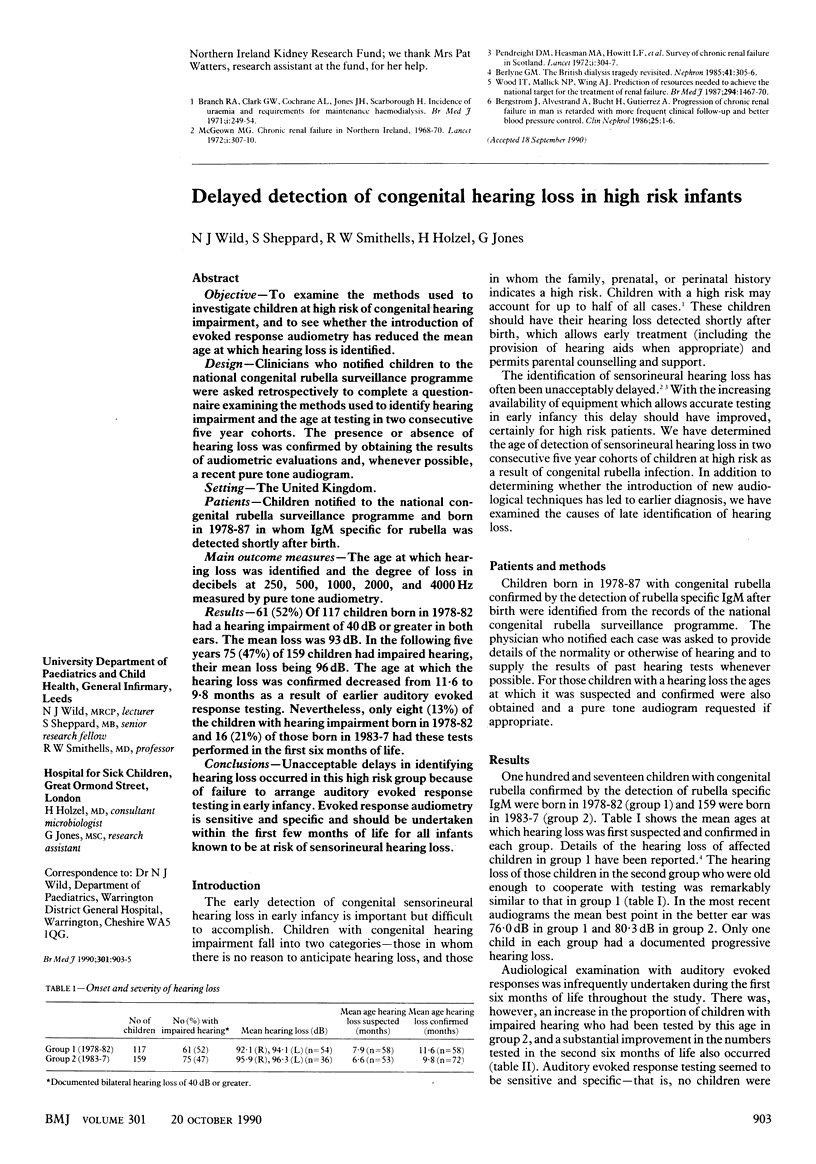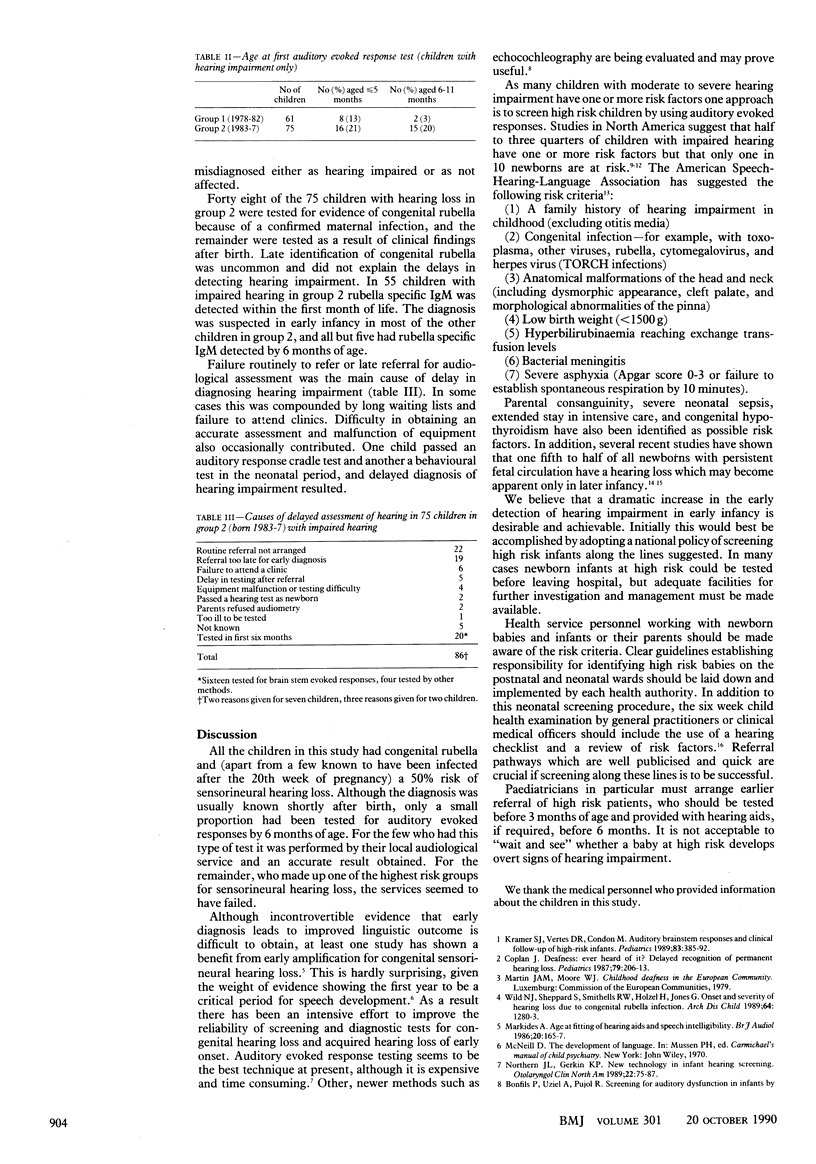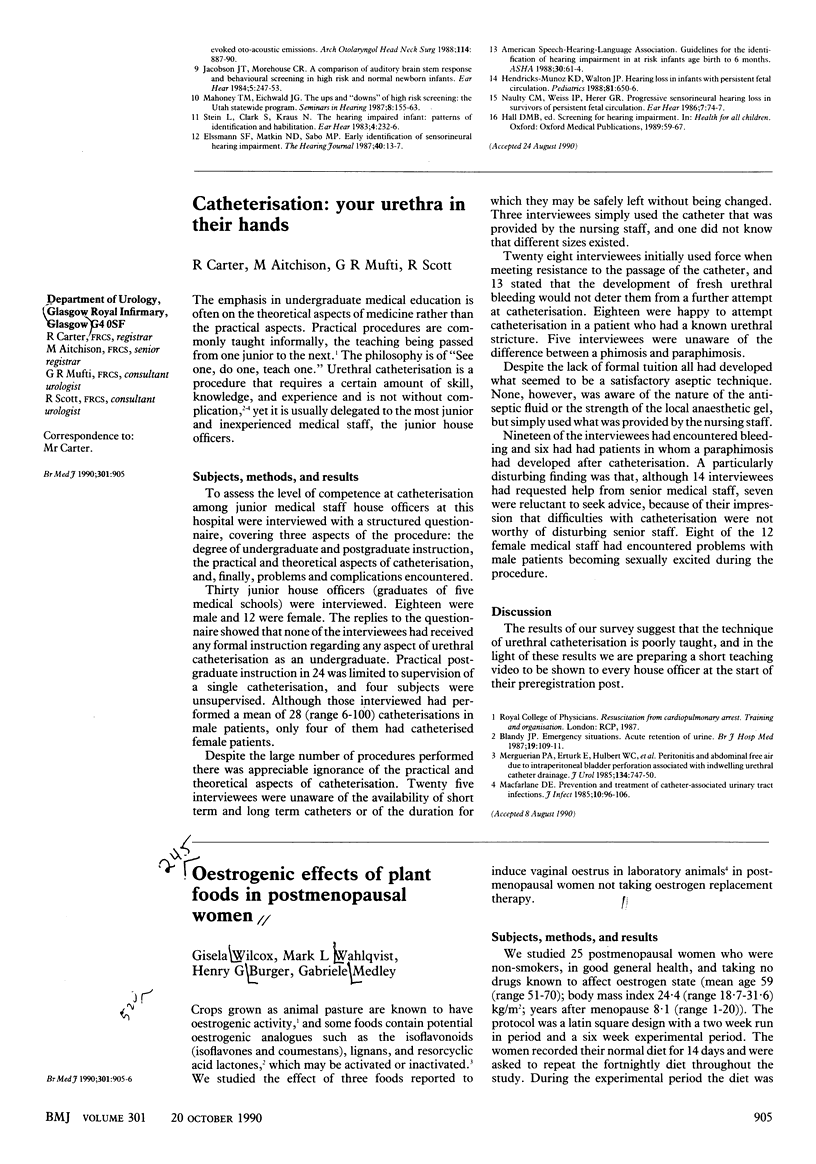Abstract
OBJECTIVE--To examine the methods used to investigate children at high risk of congenital hearing impairment, and to see whether the introduction of evoked response audiometry has reduced the mean age at which hearing loss is identified. DESIGN--Clinicians who notified children to the national congenital rubella surveillance programme were asked retrospectively to complete a questionnaire examining the methods used to identify hearing impairment and the age at testing in two consecutive five year cohorts. The presence or absence of hearing loss was confirmed by obtaining the results of audiometric evaluations and, whenever possible, a recent pure tone audiogram. SETTING--The United Kingdom. PATIENTS--Children notified to the national congenital rubella surveillance programme and born in 1978-87 in whom IgM specific for rubella was detected shortly after birth. MAIN OUTCOME MEASURES--The age at which hearing loss was identified and the degree of loss in decibels at 250, 500, 1000, 2000, and 4000 Hz measured by pure tone audiometry. RESULTS--61 (52%) Of 117 children born in 1978-82 had a hearing impairment of 40 dB or greater in both ears. The mean loss was 93 dB. In the following five years 75 (47%) of 159 children had impaired hearing, their mean loss being 96 dB. The age at which the hearing loss was confirmed decreased from 11.6 to 9.8 months as a result of earlier auditory evoked response testing. Nevertheless, only eight (13%) of the children with hearing impairment born in 1978-82 and 16 (21%) of those born in 1983-7 had these tests performed in the first six months of life. CONCLUSIONS--Unacceptable delays in identifying hearing loss occurred in this high risk group because of failure to arrange auditory evoked response testing in early infancy. Evoked response audiometry is sensitive and specific and should be undertaken within the first few months of life for all infants known to be at risk of sensorineural hearing loss.
Full text
PDF


Selected References
These references are in PubMed. This may not be the complete list of references from this article.
- Bonfils P., Uziel A., Pujol R. Screening for auditory dysfunction in infants by evoked oto-acoustic emissions. Arch Otolaryngol Head Neck Surg. 1988 Aug;114(8):887–890. doi: 10.1001/archotol.1988.01860200071021. [DOI] [PubMed] [Google Scholar]
- Coplan J. Deafness: ever heard of it? Delayed recognition of permanent hearing loss. Pediatrics. 1987 Feb;79(2):206–213. [PubMed] [Google Scholar]
- Hendricks-Muñoz K. D., Walton J. P. Hearing loss in infants with persistent fetal circulation. Pediatrics. 1988 May;81(5):650–656. [PubMed] [Google Scholar]
- Jacobson J. T., Morehouse C. R. A comparison of auditory brain stem response and behavioral screening in high risk and normal newborn infants. Ear Hear. 1984 Jul-Aug;5(4):247–253. doi: 10.1097/00003446-198407000-00010. [DOI] [PubMed] [Google Scholar]
- Kramer S. J., Vertes D. R., Condon M. Auditory brainstem responses and clinical follow-up of high-risk infants. Pediatrics. 1989 Mar;83(3):385–392. [PubMed] [Google Scholar]
- Markides A. Age at fitting of hearing aids and speech intelligibility. Br J Audiol. 1986 May;20(2):165–167. doi: 10.3109/03005368609079011. [DOI] [PubMed] [Google Scholar]
- Naulty C. M., Weiss I. P., Herer G. R. Progressive sensorineural hearing loss in survivors of persistent fetal circulation. Ear Hear. 1986 Apr;7(2):74–77. doi: 10.1097/00003446-198604000-00004. [DOI] [PubMed] [Google Scholar]
- Northern J. L., Gerkin K. P. New technology in infant hearing screening. Otolaryngol Clin North Am. 1989 Feb;22(1):75–87. [PubMed] [Google Scholar]
- Stein L., Clark S., Kraus N. The hearing-impaired infant: patterns of identification and habilitation. Ear Hear. 1983 Sep-Oct;4(5):232–236. doi: 10.1097/00003446-198309000-00002. [DOI] [PubMed] [Google Scholar]
- Wild N. J., Sheppard S., Smithells R. W., Holzel H., Jones G. Onset and severity of hearing loss due to congenital rubella infection. Arch Dis Child. 1989 Sep;64(9):1280–1283. doi: 10.1136/adc.64.9.1280. [DOI] [PMC free article] [PubMed] [Google Scholar]


